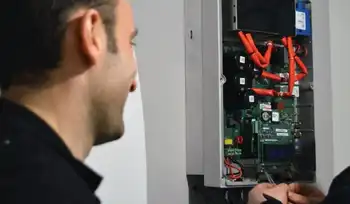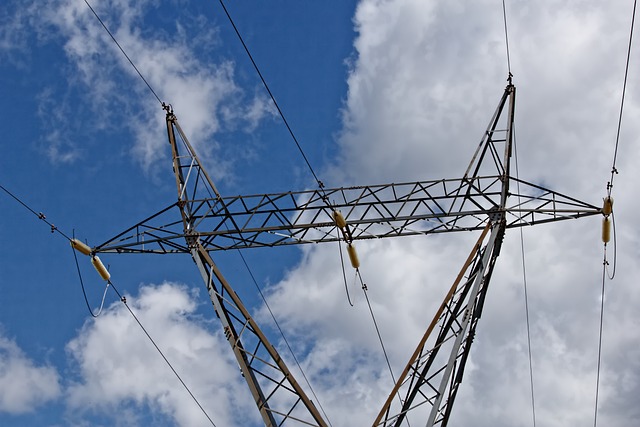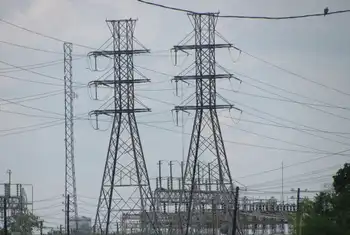Cities and power companies debate burying power lines to reduce the impact of mass power outages versus cost
ST. LOUIS - As a freshly minted chief executive, Ameren Corp.'s Gary L. Rainwater declared in 2004 that one of his goals was to systematically bury the company's power lines over a period of decades to avoid mass power outages and improve relationships with customers.
Not long after that, the CEO crunched numbers with Chief Operating Officer Tom Voss and realized that, despite the benefits, putting 61,000 miles of overhead distribution line below ground wasn't feasible.
"Tom educated me on the numbers, and I said, 'Scratch that one off the list,'" Rainwater said at the company's Chouteau Avenue headquarters. "The cost to provide underground service would be literally hundreds of dollars a month. It would triple or quadruple the price of electricity."
Across the country - especially in the hurricane-prone Southeast - utilities continue to look at putting more electric lines below ground to storm-proof systems and improve aesthetics. And in most new subdivisions in the St. Louis area and elsewhere in the country, developers and utilities often share the cost of putting new lines underground.
But even after the July 19 and 21 thunderstorms that spawned tornadoes and severed power to 700,000 customers - some for more than a week - rewiring the region isn't viewed as a realistic solution.
Ameren officials cite a survey by the Edison Electric Institute, a trade association for investor-owned utilities, that showed customers are willing to pay about $25 a month extra to put lines underground. But the real cost of digging up streets and sidewalks and replacing equipment would be about $50,000 per customer.
Despite the high price tag, industry analysts say underground systems aren't immune to disruption. Just ask Consolidated Edison customers in Queens, where it took 10 days to restore power to tens of thousands of customers last month in part because lines were underground, prolonging repairs.
Underground electric systems also are susceptible to water incursion. And typically, not all of a circuit can be placed underground, exposing at least part of it to damage from falling trees or ice.
"Underground systems go down less often, but the outage in duration is much longer," said Gautam Mukherjee, an analyst at Cambridge Energy Research Associates. "Unfortunately, with storms there's no single good solution."
The Washington-based Edison Institute last month released a detailed study on underground power lines called "Out of Sight, Out of Mind?" It estimates the cost of installing underground lines at $1 million a mile compared with about $100,000 a mile for overhead lines.
The study looked at data from Virginia and Long Island Power Authority and showed that, on average, underground circuits had only 20 percent to 25 percent of the outages of overhead circuits. However, repairs took 2 times as long because problems are harder to find and underground lines require special equipment and crews.
Despite the costs, at least two municipal utilities in Missouri are moving forward with plans to put more of their distribution systems below ground to avoid widespread outages like the one the St. Louis area dealt with last month.
Farther west, Independence Power & Light is taking a more aggressive approach.
The city of 110,000 residents is spending $1.5 million a year to put existing overhead lines underground. Since a 2002 ice storm crippled the city, it has received about $4 million in federal grants to bury thousands of individual lines to customers' homes.
The utility also shares the cost of burying lines to customers' homes with the customers' payments spread over five years. About 200 a year sign up, the utility says.
IPL doesn't have statistics to show its initiative is making the city's distribution system more reliable, but Jack Looney, an engineering planner and supervisor for the utility, says proof should come when the next big storm hits.
"The system operates much more efficiently and much more reliably than it did 10 years ago and certainly 20 years ago," he said. "And we're not going to stop here."
Related News

A Snapshot of the US Market for Smart Solar Inverters
WASHINGTON - Advanced solar inverters could be one of the biggest distributed energy resource communications and control points out there someday. With California now requiring at least early-stage “smart” capabilities from all new solar projects — and a standards road map for next-stage efforts like real-time communications and active controls — this future now has a template.
There are still a lot of unanswered questions about how smart inverters will be used.
That was the consensus at Intersolar this week, where experts discussed the latest developments on the U.S. smart solar inverter front. After years of pilot projects, multi-stakeholder technical working groups,…




